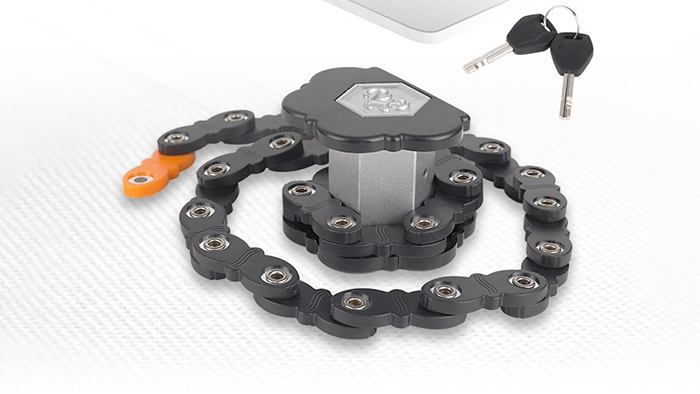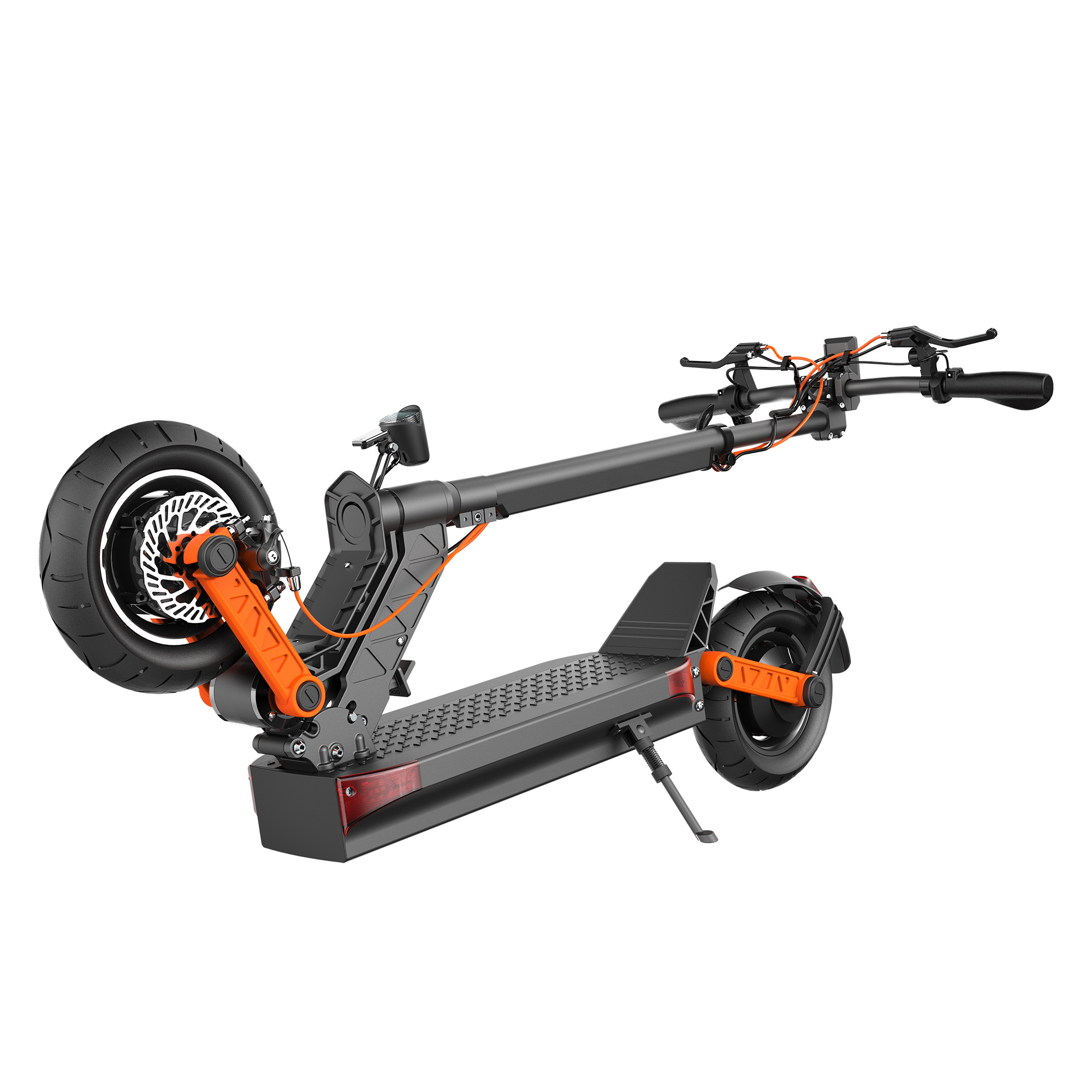Ready to upgrade your electric scooter game? It’s all about finding the perfect voltage! Addressing factors such as battery capacity, motor specifications, terrain, and your unique preferences. In this guide, we’ll take you through these essential aspects to help you understand how voltage works and make an informed decision for a customized and enjoyable electric scooter experience.

What is the voltage of the electric scooter?
Definition of voltage
Voltage, usually denoted by the symbol “V”, is the difference in potential between two points in a circuit. Simply put, this force drives an electric current through a conductor, such as a wire in a scooter. The unit of measurement for voltage is the volt (V).
Explain how voltage affects the performance of electric scooters
Voltage plays a critical role in determining the performance of electric scooters. Higher voltage usually means better overall performance, including factors such as speed, range and acceleration.
Speed:Higher voltage makes the scooter’s motor run faster, which ultimately leads to a higher top speed. This is especially important for those looking for a high-performance electric scooter for long commutes.
Range:The range of an electric scooter, or the distance it can travel on a single charge, is also affected by voltage. Higher voltage usually means greater mobile battery capacity (measured in watt-hours or Wh), allowing the scooter to travel longer distances before recharging.
Acceleration:The scooter’s ability to pick up speed or accelerate quickly is also affected by voltage. Higher voltage provides more power to the motor, resulting in faster acceleration. This is especially important for climbing hills or navigating through busy urban environments.
Factors affecting the voltage of electric locomotives
Battery Capacity
Battery capacity is one of the main factors affecting the voltage of electric scooters. The power of a motorcycle battery is usually measured in amp hours (Ah) or watt hours (Wh). Batteries with larger capacities store more energy and can be used to maintain higher voltages for longer periods of time.
Electric scooters use different types of batteries, such as lithium-ion and lead-acid batteries. Compared to lead-acid batteries, lithium-ion batteries have more power, are lighter and last longer. That’s why they usually provide higher voltage and improve the performance of the scooter.
The science behind the performance of electric scooters
The science behind electric scooter performance is deeply rooted in the relationship between voltage and various performance aspects (such as speed, range and acceleration). Understanding the key role voltage plays in these factors is critical when evaluating the performance of an electric scooter.
However, it is important to recognize that other factors, such as motor power, scooter controller settings, and rider weight, also contribute to the overall performance of the scooter.
Voltage and speed
Voltage is a key factor in determining the speed of electric scooters; higher voltage usually leads to higher top speed. The relationship between voltage and speed can be explained by the fact that higher voltage provides more power to the motor, generating more torque and rotational force. As a result, scooters can reach higher speeds.
It is important to note that while higher voltage can increase the top speed of an electric scooter, other factors such as motor power, scooter controller settings, and rider weight can also affect the scooter’s speed capability.
Voltage and Range
Voltage also has a direct impact on the range of an electric scooter. The range of an electric scooter refers to the distance it can travel on a single charge. Boosters with higher voltage usually have higher battery capacity and can store more energy and travel longer distances before recharging.
However, it is important to consider that higher voltage sometimes equates to greater range. Factors such as the weight of the motorized scooter, rider weight, terrain and riding style can all affect the range covered.
Voltage and acceleration
Acceleration is another performance aspect of electric scooters that is affected by voltage. Higher voltage can lead to faster acceleration, providing more power to the motor, allowing it to produce more torque faster. This increased torque pushes the scooter forward faster and increases acceleration.
It is important to remember that while voltage plays an important role in acceleration, other factors, such as motor power, booster controller settings and rider weight, can also affect the acceleration ability of an electric scooter.
Voltage is the key to determining the performance of an electric scooter. It affects the top speed, range and acceleration of the scooter, making it a fundamental consideration when choosing the ideal scooter for your needs.
Motor specifications
Motor specifications of electric scooters also play an important role in determining the voltage of the electric scooter. Motors come in a variety of types and power levels that directly affect the performance of the scooter.
The power of a motor is measured in watts (W), and motors with higher wattage usually require higher voltages to work effectively. Therefore, scooters with more powerful motors will need batteries capable of delivering higher voltages to support their performance.
In addition, motor efficiency and design can affect the voltage requirements of electric scooters. Some motors are designed to operate efficiently at lower voltages, while others may require higher voltages to achieve peak performance.
In summary, factors such as battery capacity and motor specifications have a significant impact on the voltage of heavy-duty adult electric scooters. Power-assisted scooters with high-capacity batteries and powerful motors typically require higher voltages to provide optimal performance.
How to choose the right voltage for your electric scooter
Choosing the right voltage for your electric scooter is critical to ensure that it meets your specific needs and preferences. This process involves evaluating several factors such as performance requirements, terrain, battery type and budget. Personal preferences, including your riding style and the intended use of the scooter, also play a vital role in determining the ideal voltage. By carefully evaluating these factors and your preferences, you can choose the perfect voltage for your power scooter that will provide you with the best riding experience.
Factors to consider when selecting voltage
Choosing the correct voltage for your dual motor electric scooter requires several considerations to ensure that the scooter meets your specific needs and preferences. Let’s use the ANYHILL RS-B10 as an example. Some aspects to consider when choosing the ideal voltage for your electric scooter (such as the ANYHILL RS-B10) include.
Performance requirements:Determine the maximum speed, acceleration and range you want to help you choose the right voltage for your heavy-duty adult electric scooter. Higher voltage usually means better performance, but consider the scooter’s motor power, controller settings and rider weight. the ANYHILL RS-B10 is equipped with a 60V lithium-ion battery that contributes to its impressive top speed and range.
Terrain:The type of terrain you are riding on is critical when choosing the correct voltage. If you plan to ride on hilly or rough terrain, a high voltage moped like the ANYHILL RS-B10 may be better suited as it usually has dual 1000W hub motors to provide better torque and power for climbing hills.
Battery Type:The type of battery used in a booster bike can affect voltage and overall performance. Compared to lead-acid batteries, the lithium-ion batteries in the ANYHILL RS-B10 are typically lighter, have higher energy density and higher voltage. Consider the pros and cons of each battery type before making a decision.
Budget:Higher voltage scooters are usually more expensive because of their increased performance capabilities. Develop a budget to help you find the right scooter with the right voltage for your price range, such as the ANYHILL RS-B10, which offers excellent performance and features.
Riding Style
Your riding style is another key factor when choosing the correct voltage for your electric scooter. Different riders have unique riding styles, which may affect their expected performance characteristics in an electric scooter with a seat.
For example, aggressive riders who like sharp turns and fast acceleration may benefit from a higher voltage scooter, which typically offers more power and faster response times. On the other hand, riders who prefer a more relaxed and leisurely pace may opt for a lower voltage scooter, which offers a smoother, more comfortable ride and improved energy efficiency.
Personal Preference
Your personal preferences play an important role in choosing the right voltage for your electric scooter.
Some riders may prioritize speed and acceleration, while others are more concerned with range and energy efficiency. When choosing a scooter voltage, it is important to consider your riding style, the use of the scooter (e.g., commuting, recreational, or off-road), and any specific features that are important to you.
You can provide the best electric scooter experience by carefully evaluating your needs and preferences to select the ideal voltage.
Summary
When picking the perfect electric scooter, voltage plays a huge role in determining its performance. It’s the secret weapon that affects your riding speed, range and acceleration. When making your choice, consider factors such as battery capacity and motor specifications. To find the ideal voltage, think about what’s most important to you – its speed, terrain, battery type, or budget? Don’t forget to consider your personal riding style and preferences. After all, the ultimate goal is to find an electric scooter that fits your needs and provides you with the best riding experience possible.



